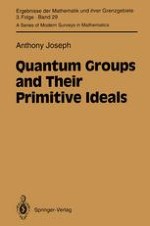1995 | Buch
Quantum Groups and Their Primitive Ideals
verfasst von: Anthony Joseph
Verlag: Springer Berlin Heidelberg
Buchreihe : Ergebnisse der Mathematik und ihrer Grenzgebiete. 3. Folge / A Series of Modern Surveys in Mathematics
Enthalten in: Professional Book Archive
